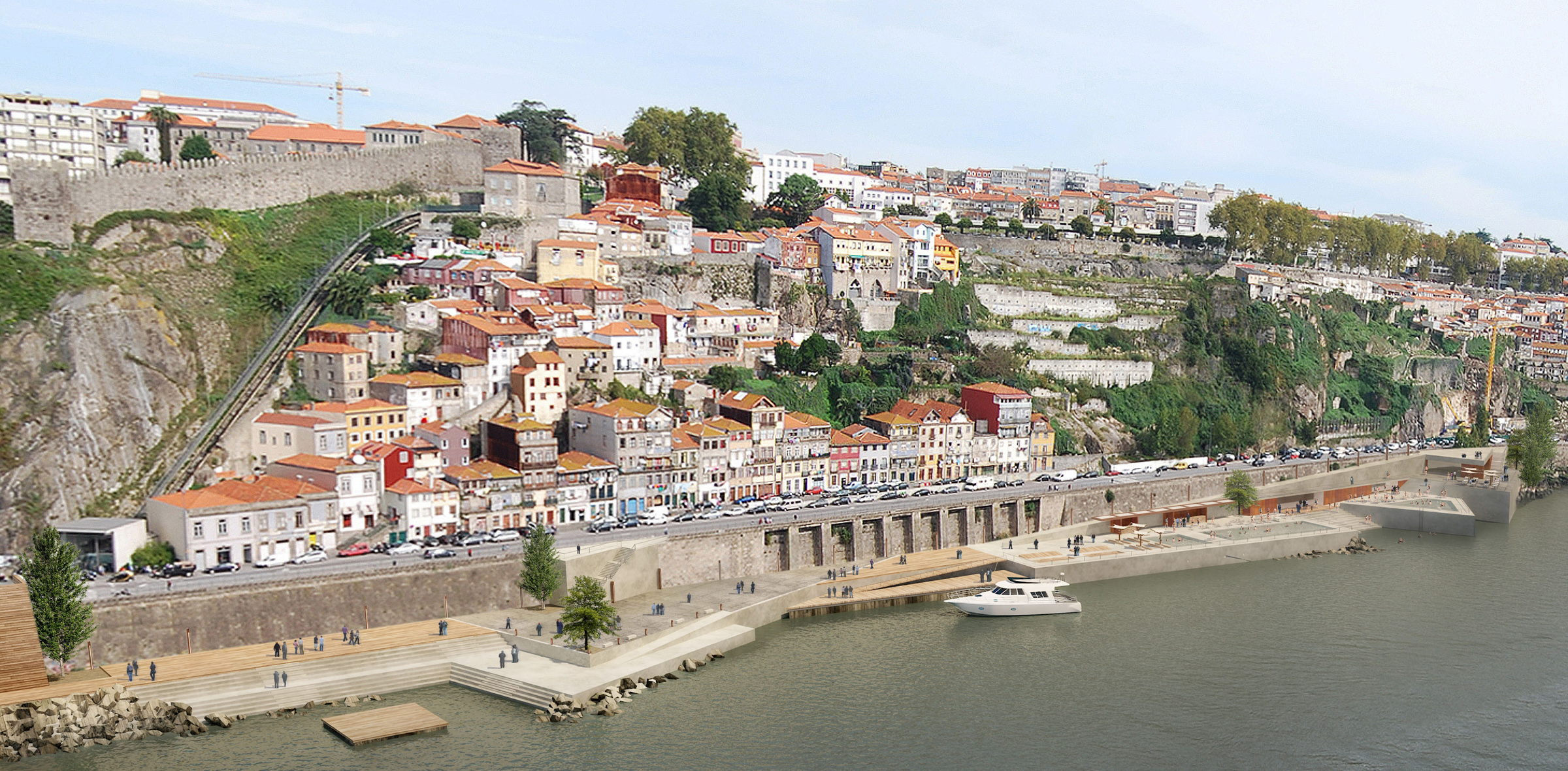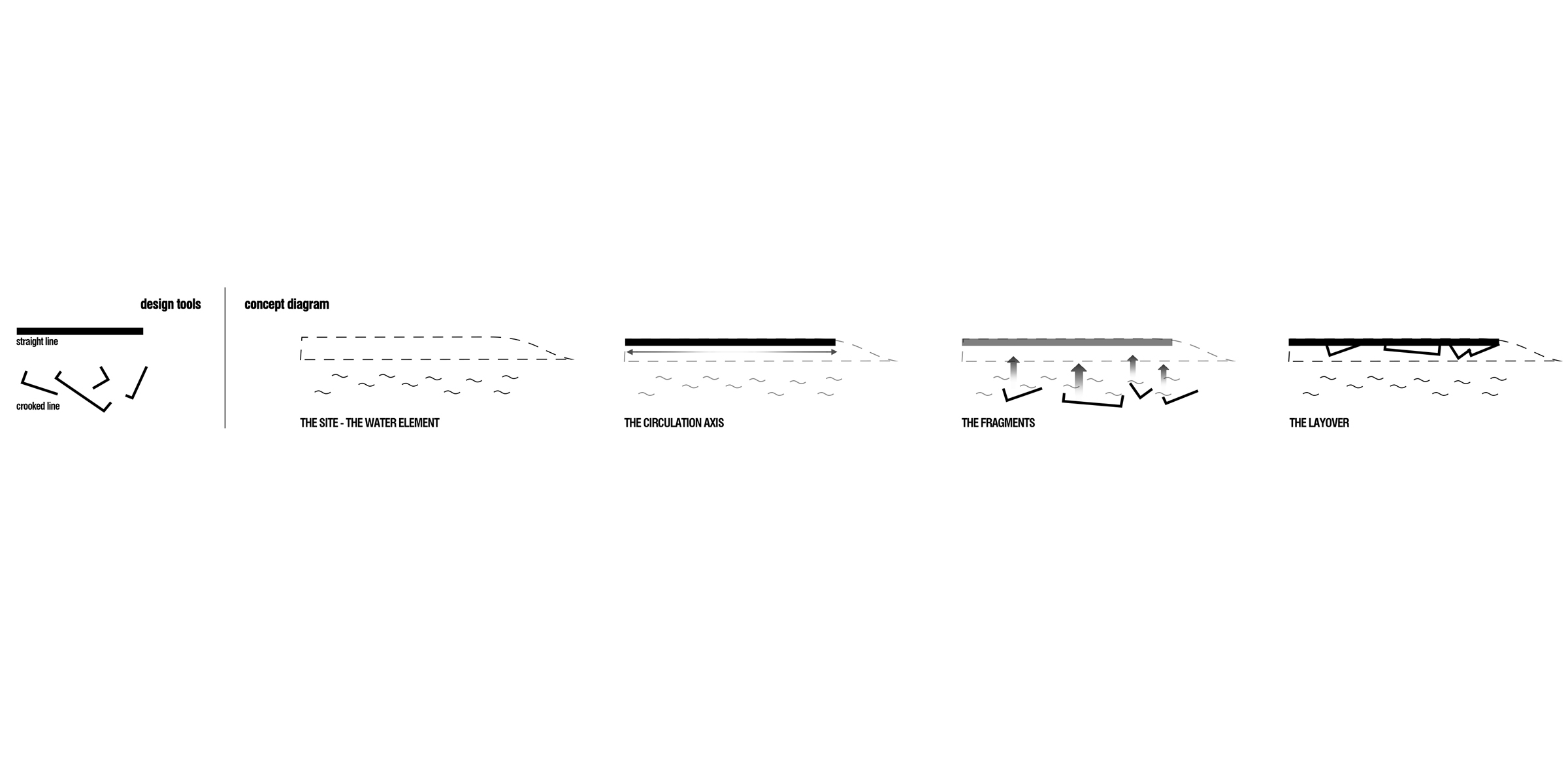
“PORTO POOL PROMENADE IDEAS COMPETITION” PROPOSAL 1 – PORTO / PORTUGAL
- Stateon drawing board
- OwnerCtrl+Space
- Size10000 m2
THE IMPORTANCE OF WATERFRONT URBAN AREAS AND THEIR REGENERATION
The waterfront areas of the city are the intersection of the urban and natural landscape. They consist the transition points of the city’s gateway to the sea. The regeneration of these areas, through their design, pursues to redefine the relationship between cities and water, the renewal of the urban space as well as the the image and the character of the city. The recovery of the public waterfront areas is vital as it upgrades the entire region and determines the quality of citizen’s life.
DESIGN PRINCIPLES
The purpose of this study is to upgrade the face of the riverside of Douro river and regenerate the public space that will redefine it as a public property, and not as a product. We try to highlight the identity of the public space, the purity and the uniqueness of the forms of built space and the integration into the landscape.
The design of the pools along the Douro river is combined with the creation of a public riverside promenade. The linear axis of the promenade is intensified by a parallel wooden promenade at the lower level. Linearity signifies the horizontal circulation, which is interrupted by the “fragments” that are drifted by the river. These fragments are integrated onto the linear axis and create rest areas, pools or public squares.
THE WATER LIMIT
The vertical section of the regeneration is divided into three parts (street level, the level of the promenade-pools and the water level). Their size defines their special significance. Nevertheless, intermediate levels that serve different needs are created and have different connections with the water. The platform, the main structure of the system, is located 4 meters above the water level. The platform sets the limits and creates an area where the city is expanded towards the sea. Due to the height difference, the platform is used as “belvedere”. It creates a space in which one can stand before reaching the river. It’s a step before the city comes out, while the view remains uninterrupted along the entire site.
The limit to the water does not remain constant along its length, but constantly changes, creating squares or tiers vanishing into it. The penetration into the water limit creates a different dialogue with the concrete volumes and reverses the strict limit of the shoreline.









